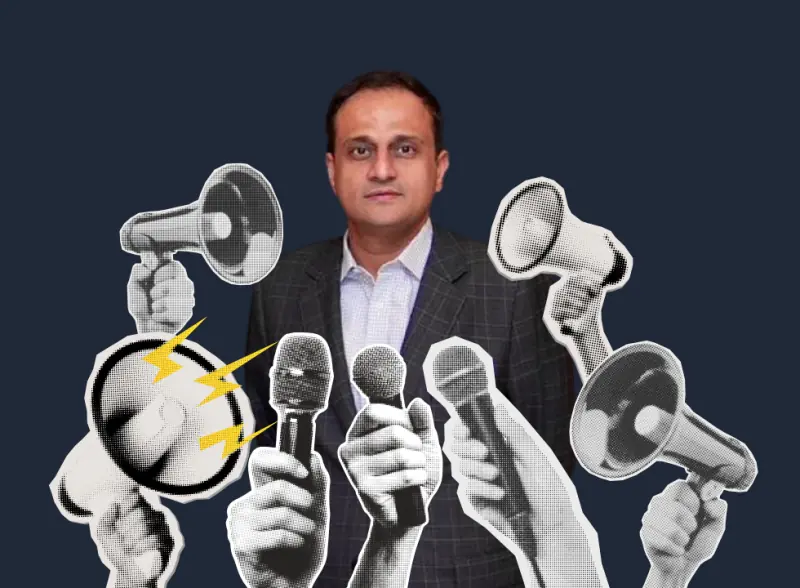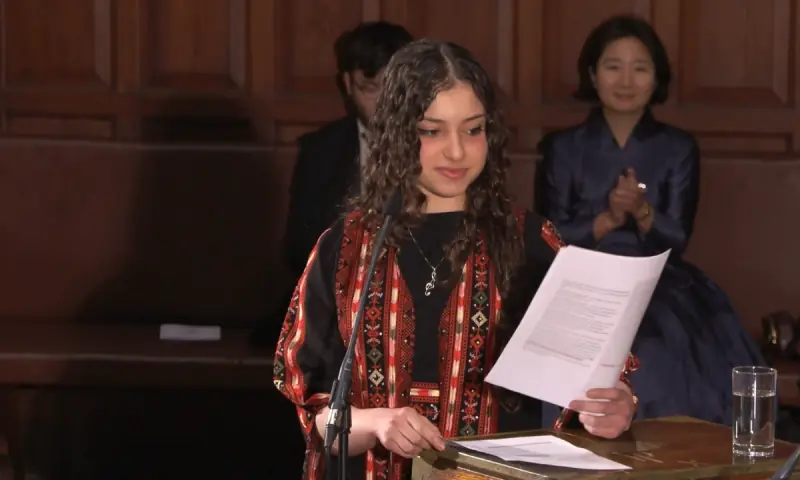Here's why the action against Zee5 is ill-advised and misguided

A few weeks ago, at a pharmacist, I found out that a popular brand of digestive tablets had been banned in Pakistan. The tablets, along with some other medicines, were being imported from India, and, apparently, doing business with the neighbouring country had become a big no, no.
I left the counter with another local brand, but it didn’t have the zingy, sour smack in the taste. Days later, I noticed at least four replacements vying for the banned product’s spot on the shelves.
When news broke of the State Bank of Pakistan (SBP) blocking Zee5’s subscription payments, I wished I had the original tablets to digest it.
The subject header of the letter from the SBP is explicit: Blocking of Payments for Subscribing Zee-5. (Cue: dramatic music in your head.)
The body text delineates the line into a brief, two-point instruction. It states that the SBP was in receipt of a letter from the Cabinet Division of the government that has “instructed [them] to stop different modes of payments including credit cards for subscribing Indian content in Pakistan, including Zee5 video-on-demand service”. All banks, EMIs (Electronic Money Institutions), PSOs/PSPs (Payment Service Providers) were “advised to ensure meticulous compliance” and “submit (their) compliance status” to the SBP by November 13.
A State Bank of Pakistan directive to block subscriptions of the Indian-origin media platform shows that politics and ego, rather than good sense, is in play
Zee5, or rather its production sub-label, Zee Zindagi, has seen its share of controversies on both sides of the border. It once got into hot waters in India for acquiring and importing Pakistani television dramas and recently ran into some trouble in Pakistan for controversial original content with Pakistani talent. It is now producing high-profile series in Pakistan, exclusively with Pakistani talent for international audiences. But blocking subscription payments on the SBP’s orders seems like a sneaky, crafty, newfangled way of stopping the platform’s extremely slow expansion into Pakistan.
Foul play is in the air, most indubitably.
Now before misguided angry protestors start crying hoarse about patriotism on social media, let me clarify one important aspect: the issue is less about the specifics of Zee5’s banning; rather it is about the future of OTTs (‘Over The Top’ ie web-based platforms) in Pakistan, content, business practice, law, cultural impact, fears et al, all amalgamated into one.
'Pakistani audience is…specific'
Let’s start with the most basic: the so-called fear of losing audiences.
Well, fear not: the Pakistani audience is…specific.
There is a specific audience for the prime time TV slot who prefer the routine, sensational fodder we churn out. Lately, I have been seeing a lot of our domestic dramas and, despite dumbfounding inanities, an utter lack of invention and bare essentials of plot, they’re strangely alluring.
This audience (me included, at times) — whether they are in Pakistan or settled abroad — are content with our brand of fake dramatics (but not the overblown Indian style), and will happily catch the shows on YouTube. They will not buy subscriptions to OTT platforms, irrespective of where the platform originates from.
Those who will, have little interest in what aunts, mothers or grandmothers of the house watch. This is the binge-watch generation, and their platform of choice right now is Netflix — not iflix, not StarzPlay, nor domestic brands such as Daikho.
Netflix has two aces up its sleeve: a massive and steadily growing content library for children, teens, young adults and mature people (young adults and mature being their target, paying, demographic); second, it gives audiences ample Bollywood content, that almost always tops Netflix’s top 10 Pakistani charts.
Anyone denying Pakistani audiences’ desire for Bollywood content — or their tenacity to watch it no matter what — is likely having the time of their life…in la-la land.
This is the very audience that still download Bollywood movies and series from their local cable’s home-made media servers or torrents. The demand has always been high for good-looking time-filler fluff — but only if it’s of Hollywood or Bollywood origin.
The same audience, however, will not pay for the same type of mediocre fluff if it is domestically made for OTT, or released in cinemas (ergo, the constant bad box-office in Pakistan). People interested in either of the two mediums will likely stream free stuff.
It's all in the numbers
So far, YouTube has undeniable power and reach, as evident in the meteoric rise of SeePrime and Nashpati Prime. The former, only seven months old with 10 short films, has over 2.5 million views and nearly 34,400 subscribers; the latter has overtaken its rival, Teeli, with over 25.5 million views and 396,000 subscribers.
Netflix would be very happy if it even comes close to a fraction of those numbers.

While official numbers are scarce, an educated guess would put Netflix’s Pakistani subscriptions in the beginning one hundred thousands (no OTT platform provides specifics). However, it is still way below India’s estimated 4.4 million subscriber count. Netflix, however, is a multi-billion-dollar international endeavour with 195 million paid subscribers worldwide.
Zee5, a key player in India, has 76.4 million active users, but the amount of paying subscribers are likely far lower (to clarify: some content is free to watch; some deals come bundled in cross-promotional plans with cell phone networks). A good general guesstimation to gauge a platform’s total subscriber count is to deduct three-quarters of its active user base.
Although details aren’t at hand, I would be amazed if Zee5 has over one thousand subscribers in Pakistan till date. The platform’s monthly subscription plan is 250 Pakistani rupees per month, or 1,500 rupees for the whole year.
Let’s put that into context: an average series Zee Zindagi produces will likely be in the 300,000-500,000 dollar budget range. That amount comes directly into Pakistan, because all productions are shot in Pakistan with local cast and crews, and are taxed by the government, just like any other production. These projects are overseen by Zee’s local partners, the Motion Content Group, a local subsidiary of the international advertisement and media sales agency Group M.
While Zee Zindagi has invested into a slate of five high-profile series, sources in the industry indicate that they are prepping for another slate of five productions, two of which have already been green-lit.
Even with one-third of its purported 76.4 million active users, Zindagi will likely recover its investment from international subscribers. Pakistanis, unless they suddenly start buying subscriptions by the millions, only contribute a negligible sum.
Things seem grim
The impediments have only ramped up in scale. The platform initially lost support from telcos after Churrails came out — again, due to government pressure — and now with the SBP’s orders, things seem grim (telcos were initially able to deduct subscription payments from digital wallets or mobile top-ups).
This one-way street of financial transaction is hypocritical and shortsighted, and the impression this action triggers has long-term, far-reaching negative consequences.
High-profile sources in the media industry, who prefer anonymity, claim that SonyLiv, ErosNow (who acquired Wajahat Rauf’s Enayaa), and even Disney+ Hotstar were showing interest in the Pakistani market after Zee5’s entry. This writer has also seen signs of Netflix’s renewed interest in Pakistan after a two-year gap (the last show they acquired was Khaani, after which every film or show, successful or not, had been passed over).
Every one of the aforementioned services are either based in India, or house a library of extensive Indian content. Logically, with India’s rapidly expanding OTT market, strategic decision-makers, and payment transactional gateways will likely have an Indian origin.
That’s just the way things have always worked; in fact, most international television channels aired in Pakistan are rebranded transmissions from either the Indian or Singaporean broadcast streams.
Breaking this “supposed” monopoly is an expensive prospect.
A better solution to the payment ban — if it were genuinely a case of stopping India’s enrichment by a measly few thousand rupees — would have been to impose special taxation on OTTs that have an Indian connection. However, given SBP’s instruction of stopping subscribers from buying Indian content in Pakistan doesn’t stop just with Zee5 (as can be read above), chances are there’s politics in play.
I have been a witness to recent meetings between media houses, unions and governmental representatives who harbour the illusion of starting a domestic Netflix-like platform for Pakistan. Launching one, let alone sustaining it, is a head-throbbing undertaking, but people in the government think that, since it is the internet, how hard — or expensive — can it be?
Well, they have no idea.
As Icon noted in its investigation and coverage of upcoming OTTs in Pakistan, most do not have quality content, and are forced to acquire content from less than ideal vendors. Others have streaming issues, even if they are financially or technically backed by specialist service providers.
To do this right, one needs at least billions in investment, thousands of hours of original content, and at least five years of mind-numbing publicity.
Frankly, anyone believing that this specific Zee5 ban comes from a place of genuine interest to preserve cultural integrity, or has the belief that the government has the wherewithal to launch and sustain a “Pakistani-version of Netflix”, is a naïve chump.
Unsurprisingly, these chumps are all over the place these days.
Just thinking about it gives me indigestion. I guess, for the time being, I’ll have to settle for a substitute digestive for the upset stomach. Pakistani OTTs, ego-driven politics and a serious lack of an enterprising mindset, don’t even give the masses that alternate option.
Published in Dawn, ICON, November 22nd, 2020












Comments